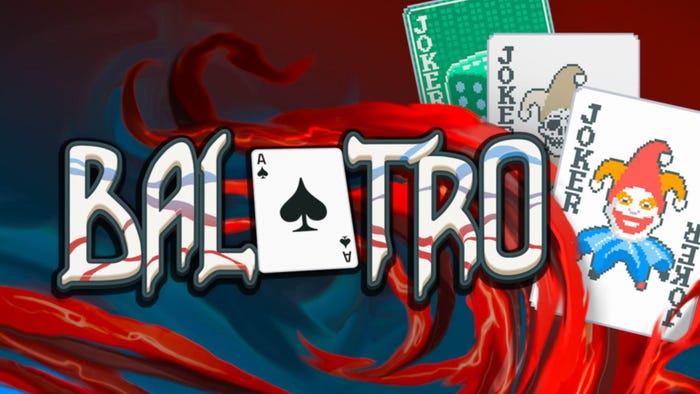
Featured Blog | This community-written post highlights the best of what the game industry has to offer. Read more like it on the Game Developer Blogs.
Poisoning the well
On how Free 2 Play game design is poisoning the relationship of trust between designer and player.

The past few days have, more or less, exploded with criticism of two principles that we can unfortunately consider core to modern, corporate game design: Free to play, and in-app purchases , or IAP. It's vaguely ironic to me that it took a single game to do so, with EA's Dungeon Keeper Mobile, a game that reportedly (I have not played it and have no interest in doing so) treats players to dramatically delayed action unless they buy in-game currency with real money so as to accelerate the process.
This is normal. It has been normal for years, and the biggest reason this single game has triggered such controversy is because it is an adaption of a beloved property, and thus draws the ire of the mainstream games press. "We" cannot believe a modern Dungeon Keeper would be such a cynical work.
This highlights two things.
1. The "runt" status of the mobile games market, not worthy of the attention of the games press unless the two sectors of Real Gaming and Casual Gaming somehow intersect by way of a franchise.
2. The core nature of free 2 play, laid bare.
It's a curious thing, seeing EA butcher Dungeon Keeper like this. Not because it surprises me to see the introduction of detrimental F2P/IAP mechanics - The past few years, every good idea on mobile has been cynically butchered in some way, be it through shameless cloning, or by the introduction of delay or difficulty mechanics bypassed through the spending of real world currency - but because it demonstrates an incredible disregard for fundamentals of computer game design.
I remember playing the original Dungeon Keeper, and incredibly well. There is an immaculate synergy to its design, from the satisfying crumble of blocks as they are rapidly dug out by your growing army of beautifully animated imps, to the delicious sounds of gold being depositied in your growing treasury, and the cackling delight at seeing new adventurers prepare to make their way through your carefully laid network of traps and monsters. This dig-build-and-defend model has been attempted several times since, most successfully by Dungeon Keeper's immediate sequel. One of my personal favorites was Evil Genius, a woefully flawed game that couldln't pull off the intricate timing game of Dungeon Keeper, where satisfaction was always imminent and crunchy and good, whereas Evil Genius had to make do with immaculate visual design to offer joy where a rather plodding building pace couldn't provide.
So it's key, to me, to look at the original Dungeon Keeper as a game of timing, rapid creation and crunchy satisfaction focused on delivering your mind to a distant place of delicious comic evil, and then look at this modern variant as a game that runs directly counter to those philosophies. This game has no purpose if not to bind you to the reality of your bank account.
Debt of time
Vampiric. The concept of a game out to make less of your time stuns me. This game, and games of its ilk, set out, set out, to make your un-paid time less valuable than the time you paid for.
I relish any ability to bring up Ghost Master, and there is no time like the present. Ghost Master, a deliciously drawn out and boring game by Empire released for the PC in 2003, is where I begin considering the value of time. I harbor somewhat of an irrational love for this game, mostly because it is an incredibly earnest and charming game on a presentational level, but also because it is one of those games that will happily waste dozens of minutes of your time simply because its basic design requires it. Ghost Master is a game in which you plot down daft AI ghosts in a location inhabited by dafter AI humans, typically to scare the humans off. Every ghost has some powers that can be used, and using those powers costs "points". Scaring humans give you more points. The balance, if there is any, boils down to pecking away at people until you get more points, so you can peck harder, and so forth. It is almost impossible to lose at Ghost Master. The best thing you can do is spend less time.
It can feel endless. But you (given that you are me) keep doing it because the music, the sound, the animation work, and the theme and basic interaction of the game feel good. This is for me the crucial intersection. The point where we are understood to spend time to acquire fun, or where fun is withheld from us at a ransom of time.
Similar in description, the two concepts could not be more different, and it baffles me that some people seem to seek to confuse the idea of the time/fun transaction with the idea of the debt/fun relationship. A game design joke, of sorts, is that common Free 2 Play games fail at this bit of basic design philosophy because time and requirement are simpler resources for economists to integrate than fun and willingness, but look at a game like Dungeon Keeper, compared to another time-sink like Ghost Master, and it becomes sadly apparent that something today is becoming diffuse and lost. The ideas of generosity, of good will, and the hope, nay, confidence, that your creation is simply worthy.
The gift of game
I believe, and this is absolutely core to the reason why I both play games and work to create them, that games are about generosity. Games are meant, I think, to be beautiful puzzle boxes, trinkets, mechanical marvels, that challenge dexterity both physical and mental, exercising your ability to understand the foreign and consider achieving the seemingly unachievable. Sometimes you just want to let off steam, and a game can let you do that. Sometimes you want to be taken elsewhere, games can take you there. Games are reality shifts, relaxation, white-knuckle challenges, gateways to friendship and antagonism, cathartic shocks of realization.
Games are science, admitting its basic human ambition to be magical.
Somehow, I suppose, coin doublers and random drop booster packs fit into this. I haven't figured that out yet.
Generosity
The very first game I bought with my own money was Monkey Island on the Macintosh. Have you seen that box art? In 1991, 9 year old me rode my bike across town to the one Trondheim Mac store that sold games and brought that gorgeous box home. I played with the code wheel (what a fantastic thing!) as I installed the game on my Mac IIsi from floppy disks. Thinking about Monkey Island today, part of me almost wants to cry, because I think back to those days and those games weren't just disposable methods of wasting my income.
Uprising. Marathon. Duke Nukem 3D. No One Lives Forever 1 and 2. Addams Family on the SNES. Mega Man 3. Gargoyle's Quest. Zelda 3. Quake. Mechwarrior 2 Mercenaries. Grim Fandango.
My god, the generosity. I paid the fee and never looked back.
Arcade culture
Some defenders of Free 2 Play design culture will tell me games like Valve's DOTA2 and Team Fortress 2 are proofs of concept. DOTA2 in particular is a spectacular bit of game, with real-money mechanics that barely surface at all in the game client unless you specifically look for them. I haven't played TF2 in a long while, but I understand its economy of hats and other superficial "upgrades" are much the same.
But here's the thing. They are not proofs of concept. They are the exceptions that prove the rule.
The overall defense is a drawn parallel to the coin-munching game designs of 80s and 90s arcade culture, with games like the Metal Slug series, so brutal that the ambition to beat the game would be realistic only to the wealthiest or the most inhumanly skilled at hand-eye coordination (though I've 1cc'd Metal Slug 3 so COME AT ME BRO), or games like Street Fighter 2 where paying for a round became a part of the multiplayer culture, with players adopting systems like stacking quarters on the cabinet to show who's next in line to fight the current reigning champion (an excellent player could stay playing for a whole evening if undefeated).
To some people, the inclusion of cash into a game's loop is validation of the principle of IAP or F2P as some sort of fundamental frequency of game design. Gauntlet's badgering of the player's wallet to prolong a draining life bar is a particularly notorious example.
But Gauntlet was fun. A single match of Street Fighter was the game. And have you seen Metal Slug? You could play that game!
Red Wizard, Needs Food, Badly. Don't Shoot The Food!
Arcade culture was absolutely about eating quarters, but it cannot possibly have been THAT far ago, that pundits choose to ignore the basic fact that arcade games survived in the market on the basis of their actual *ability* to draw money, not just the fact that they merely did.
Arcade games were about winning players over through spectacle, through fun, through generosity. Arcade games ate your quarters because you loved them.
Shareware
My opinions are generally more tempered when it comes to IAP as a basic principle. There is nothing inherently evil in a free game locking further content behind a paywall. I grew up in the shareware era; The idea of a demo offering more for a fee is perfectly sound, and it is the model I myself intend to apply for our own mobile outings. I think it is respectful of players' time to offer a solid slice of game to demonstrate what the paywall represents, as much as I believe it is respectful of developers for players to observe such a paywall and make the decision to commit their trust.
This is the fundamental transaction I am personally after, as a developer and as a player. The point where I tell the developer that yes, I believe you will make me happy, or a player will tell me yes, I believe you wish me well.
Without this trust between player and developer, my heart breaks: Why would I want to make games if my master plan is a shotgun approach where I swamp the market in advertising for my "free" monetization platform, hoping that for every 100 players that download and give it the middle finger, there are 10 that spend a few cents on a hat?
I wasn't brought up like this. Games didn't bring me up like this. I was brought up to create cool, awesome shit, beautiful mysteries, terrible horrors, to want players to *love* me. This was the promise of shareware. "How incredible is this?"
I think it's important to see IAP and F2P as different things. IAP is merely a process of purchase. F2P is a vampiric game design philosophy. There is nothing shareware about F2P, because F2P is not the conversion of a demo into a full product. This is not a complicated difference to fathom, yet Shareware seems to surface again and again as yet another example of F2P's natural place in the history of games.
Pay 2 Play
F2P's closest cousin is online casinoes offering a few dozen "free dollars" to spin virtual slot machines, and at least those are honest about their intentions. F2P games are venus fly traps by their basic philosopher's stone conceit: The entrapment of players in a loop overtly designed to drip feed pleasure and pain to extract the most life possible, measured in time and currency. F2P breaks the basic bond of trust between designer and player by seeking to manipulate the player's wish for pleasure into a calculated expenditure of their very lifespan. How is this not ugly?
It's vampire game design. I'll have none of it.
As for the designers of Dungeon Keeper Mobile, Candy Crush Saga and the endless others like them, I can only suppose it comes down to their upbringing. I hope the rest of us do our damnedest to be nothing like them. Teach our players to trust us with their happiness, so we can trust them to pay us for it.
Read more about:
Featured BlogsAbout the Author(s)
You May Also Like












